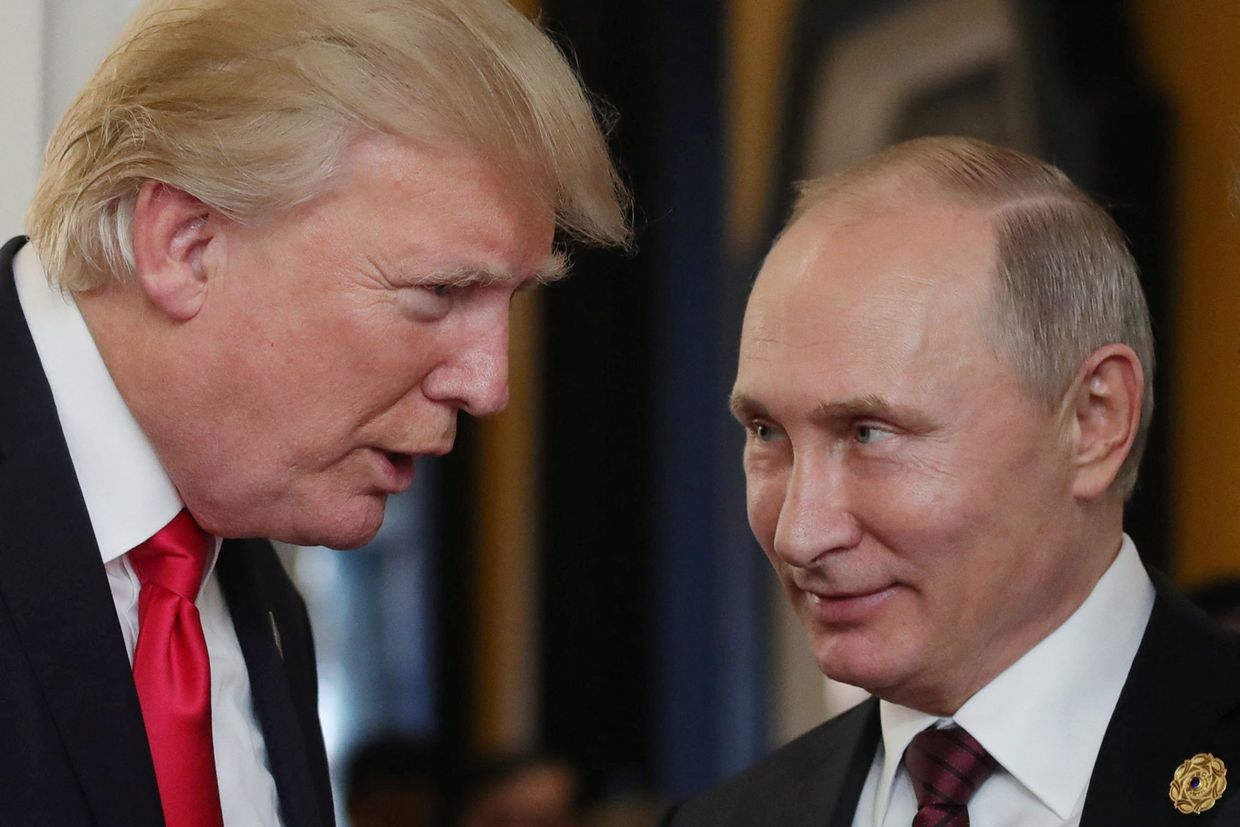Putin proposed halting war in exchange for Ukraine's eastern regions in meeting with Witkoff, WSJ reports

Russian President Vladimir Putin introduced a sweeping proposal for a ceasefire in Ukraine during a meeting with U.S. envoy Steve Witkoff, offering a halt in hostilities in exchange for Ukraine's eastern regions, the Wall Street Journal (WSJ) reported on Aug. 8, citing European and Ukrainian officials.
Despite U.S. President Donald Trump's claim that the talks between Witkoff and Putin did not serve as a breakthrough in peace negotiations, the U.S. president announced on Aug. 8 that he will meet Putin for his first in-person encounter on Aug. 15 in Alaska.
According to European officials briefed on a call by Witkoff, Putin told Wikoff that Russia would agree to a full ceasefire if Kyiv withdrew its forces from Donetsk Oblast, giving Moscow full control of Donetsk and Luhansk oblasts, as well as Crimea, WSJ reported.
European officials briefed on the proposal reportedly expressed serious reservations about the plan, worried about the prospects that Putin is pulling along negotiations as a means to avoid punishing secondary sanctions proposed by U.S. President Donald Trump.
Additional reservations posed by European officials include a lack on clarity as to territory partially occupied by Russian forces in Zaporizhzhia and Kherson oblasts — with conflicting impressions as to whether the front line would be frozen in its current place or whether there would be a withdrawal of Russian forces in the region.
According to the WSJ, Putin's proposal contains two phases. The first phase would entail Ukrainian forces withdrawing from Donetsk, thus freezing the front line. The second phase would entail Trump and Putin agreeing to a final peace plan that would later be negotiated with President Volodymyr Zelensky.
Ukraine currently controls the northern part of Zaporizhzhia and Kherson oblasts, as well as part of Donetsk Oblast.

Amid reports of the proposal, in recent days the U.S. has publicly toyed with the prospects of swapping land in exchange for peace. Trump told reporters on Aug. 8 that a potential peace deal between Moscow and Kyiv would likely include "some swapping of territories."
"Well you're looking at territory that's been fought over for three-and-a-half years... So we're looking at that but we're actually looking to get some back," Trump said during a press conference alongside the leaders of Armenia and Azerbaijan. "Some swapping, it's complicated."
"We're going to get some back. We're going to get some switched. There will be some swapping of territories to the betterment of both," Trump added.
Trump did not specify what he meant by "swapping." Russia previously declared the annexation of the latter four regions, which are partially occupied by Russia, in 2022 following sham referenda.
Seemingly ramping up pressure to come to a peace agreement, Trump said that Zelensky was "going to have to get ready to sign something," without specifying what terms to agreement may be present.
Bloomberg reported on Aug. 8, citing undisclosed sources, that U.S. and Russian officials are working on a territorial agreement, aimed at freezing the conflict and laying the groundwork for a ceasefire and technical negotiations toward a final peace settlement.
Kyiv and Moscow have held three rounds of negotiations on an end to the war, with each round failing to halt hostilities. Zelensky earlier this week signalled his willingness to participate in leader-level discussions, but it was not immediately clear whether he will participate in talks in Alaska.
Ukraine's Presidential Office has not yet publicly commented on the proposal. A Ukrainian official who participated in the call with Witkoff told the WSJ that Kyiv was not opposed to any proposals, however, stressing that a ceasefire would serve as a prerequisite for any further steps.
Russia has repeatedly espoused maximalist demands to end its war in Ukraine publicly demanded that Kyiv forgo NATO membership and withdraw troops from all four regions as preconditions for peace. Under this condition, several large cities under Ukrainian control would have to be handed over to Russia.













